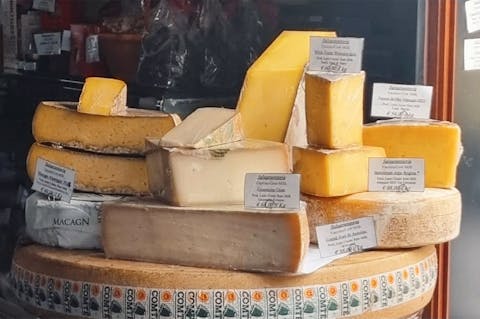From the Neighborhood to the Territory: The Cherchi Brothers’ Model | Olianas
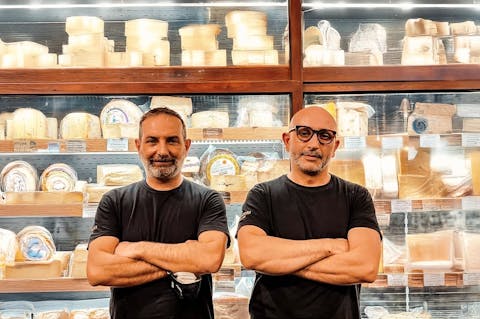
People
From the Neighborhood to the Territory: The Cherchi Brothers’ Model
by Jessica Cani
When you meet the Cherchi brothers, it’s not uncommon to stop and chat—or even better, to share some cheese. If you have known them for a long time, it becomes easy to understand that behind their projects, where cheese takes center stage alongside much research, lie the values of family, trust, and service to the neighborhood: the three pillars that, over thirty years, have transformed a local shop into a daily laboratory of quality.
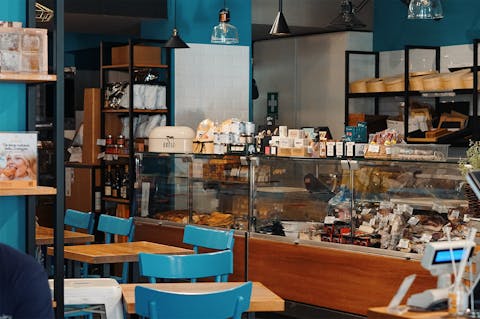
In the 1980s, the Cherchi family had a single income: the father was an employee, and the mother a homemaker. In 1984, they moved from Quartucciu to Selargius. The children were four: Fabrizio, Michele, Corrado, and Alice.
They grew up with a simple lesson: learning how to sell. Cycling with their grandfather to pick grapes and figs, or weighing produce on a small scale, was part of their childhood, as was staying loyal to those who work well. Always the same butcher, always the same greengrocer with the little truck—loyalty was a family habit.
In 1997, everything changed. There was a neighborhood shop up for grabs. Michele was a Political Science student, Fabrizio a short-term military serviceman finishing his duty—they did not inherit a trade; they built it, with help from their father who advanced part of his severance pay and a bank that was willing to listen.
Their first decision already reflected their approach to commerce: changing the hours. Opening earlier, closing later, covering the hours that were previously unserved. Between 1:00 and 2:30 p.m., they reached workers, dual-income couples, and anyone looking for a quick and good lunch. From that window of time, a clientele was born, and an identity began to take shape: service at the center of the project.
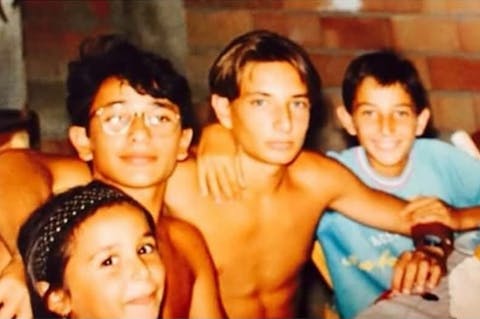
In 2001, the big step came: a larger space, longer shelves, increasing demands. The shop grew, as did the team—not by hiring professionals, but with a simple and unconventional idea: train people, because skills can be learned, but the attitude for service cannot.
Recruitment was almost local: young people stopping by to lend a hand, siblings of existing employees, familiar neighborhood faces becoming colleagues. It is a long-term investment, built on mentoring, mistakes, and shared responsibilities. "When you hire only professionalism, you risk buying a title and losing the team," they admit, because the team is not just a set of skills, but shared time.
Within this philosophy lies the symbolic story of Andrea. He was first a trusted bread supplier for many years, and when the bakery closed, he joined the team—a natural continuation of an existing relationship. "Andrea and I knew each other before we opened: turning a supply relationship into collaboration was almost automatic."
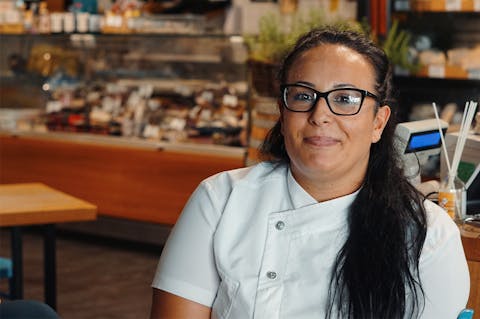
This is how the Cherchis maintain, within the city, a neighborhood concept that elsewhere tends to fade: long-lasting relationships, constant presence, and responsibilities flowing both ways. Daily management follows the same logic: schedules aligned with life rhythms, continuous in-house training (cutting, storage, product storytelling), and constant dialogue between counter and kitchen.
The result is a team capable of handling complexity: those at the counter know the raw materials as well as those who transform them in the kitchen, and those serving at the table can convey to the customer the work behind the shelves. At the core is the understanding that quality is not an individual gesture but an ecosystem: suppliers treated as allies, colleagues trained in-house, and customers who return because they recognize this unwritten pact.
This concept extends to the market stall at San Benedetto (now relocated to Piazza Nazzari), to Salsamenteria, the shop opened in 2017, and to the Bistrot at Poetto, where Alice was in the kitchen, recently closed. “I learned a lot, and it was a way to discover what I really wanted to do. We learned immensely, especially in management, and it was fun. But everything has its cycle, and the Bistrot’s cycle had ended.”
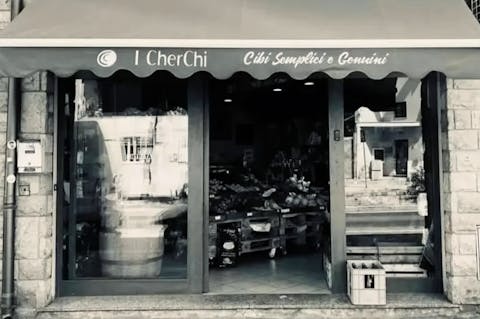
The meticulous search for the right product didn’t come immediately, though it was always of interest. One day, an event happened that changed everything. Michele remembers the scene vividly. A lady, standing in front of a cheese board that included a Stilton, an English blue cheese, asked: “What milk is it made from?” “I blurted out that it was sheep’s milk,” he recalls. “Then, as I served her, I started to doubt myself, and when I got home I checked to be sure I hadn’t made a fool of myself. Well… I had, because it was actually cow’s milk.”
That question became a switch. “We realized that just bringing a fancy product wasn’t enough: if you can’t explain it, you’re merely moving it from one shelf to another.” That marked the beginning of their decision to study.
Self-taught, yes, but with method. Manuals, deliberate tastings, visits to dairies. And above all: bringing courses back to Sardinia that didn’t exist, opening classrooms to producers and enthusiasts. “Education became our way of giving back value: what we learn, we put back into circulation.”
Even travel took on a new meaning: fairs that were once ignored became places for exchange. Cheese fairs became open-air laboratories. “We go to strip away certainties,” says Michele. “We return with better questions and a few more answers.” Meanwhile, a structural limitation became clear at the counter.
“In Sardinia, we tell very little of our real variety.” Outside the island, people know us for pecorino, and rarely is there a narrative highlighting all the varieties; inside, everyone works on their own. Yet the island is a mosaic: goat in areas with clean acidity; cow in the central-northern regions with stretched cheeses (perette, paneddas, casizolu) and precise techniques; sheep in many variations of pasture and season. True differences, not replicable. The point is to line them up. A common lexicon and a unified presence at fairs to show the whole picture before the individual elements: consortia, associations, speaking with one voice, and then letting each producer play their own note.
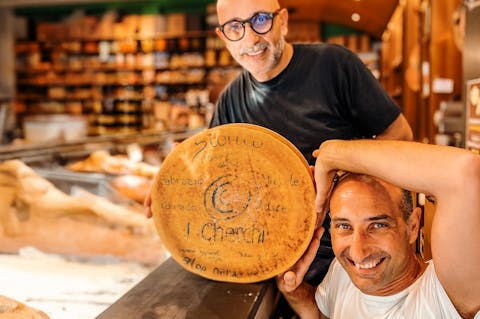
Over thirty years, the Cherchi brothers have built not just a business, but a model of entrepreneurial sustainability that goes against the grain of expansion at any cost. “We tried to change ourselves by doing the dinner service, but we realized economically it wasn’t sustainable.”
For the Cherchis, sustainability is not only a matter of balance sheets but of human equilibrium. “There were days when I worked from 7 a.m. at the market until 9 p.m. But for what? And how long can I keep doing this?” This question guided their strategic choices, leading them to prioritize service quality and staff well-being over immediate revenue.
Alberto, their chef, has been with them for six years—a “record” precisely because he found sustainable working conditions. “For us, it’s important to put people in a position to stay, which means being able to plan their lives,” they explain. “You can’t keep working only for me, and I’ve been saying this since COVID: the future of hospitality is service,” Michele adds.
This vision has led them to resist the temptation of uncontrolled expansion. “People say: let’s open 10 locations, okay. But will those 10 have the same service and quality standards? Impossible,” they reflect, noting how many successful businesses lose quality when they grow too fast. Their sustainability also manifests in family management.
When asked what it means to work with siblings, they laugh and joke, then affirm: “One thing we’ve never done: we’ve never fought over money.” They’ve seen too many families destroyed by economic disputes and chose a different path: “Some people lose a brother over four bricks, but why should I care?”
Looking to the future, the Cherchis see diversification not as expansion, but as a natural evolution: “We’ve started diversifying, so it’s clear to also think about the period when we physically won’t be able to keep up the pace.” Training becomes central to their projects, continuing the educational vocation that has always distinguished them in telling the story of cheeses and their territory.
Their lesson is clear: entrepreneurial sustainability doesn’t just mean surviving economically, but building a model that respects people, preserves quality, and looks to the long term.
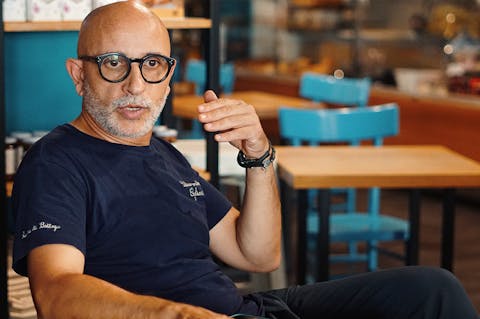
Among the most frustrating moments, they tell me, was a few years ago at Cheese in Bra, the international cheese fair: “For years, the Sardinia Region didn’t exist. It wasn’t there. It was absent.” When an institutional stand finally appeared, Sardinian producers behaved in a self-defeating way: “All the producers were careful to keep their distance from one another. If they were close, the neighbor would sell more than him.”
This mentality of mental rather than geographical isolation is what the Cherchis fight against every day. “Isolation is a state of mind,” they reflect, observing how other regions present themselves united: “Look at the effect of Garfagnana. It was a single voice representing a vast array of products. The territory is what sells.”
Their battle to network begins from the ground up, producer by producer. “If producers want to give voice to what they do, they have to join forces because ten voices start to become louder than one.” In their minds, a concrete dream takes shape: “I want a cheese route in Sardinia. To create tours of the cheese producers themselves.”
A route that connects small excellent realities scattered across the island, which “paradoxically always correspond to fantastic places.” Samuel Lai with his Sinnos, Geronimo Sanna in Samugheo, Agnese and Giacomo with their modern approach in Ozieri, Giuseppe Cugusi with his Fiore Sardo in Fordongianus, Pietro Ragaglia with his Antica Caresi. “We can diversify, we can help small producers who need a hand,” dream the Cherchis.
But a change of mindset is needed: producers must learn to tell their story, institutions must coordinate, and consumers must discover the treasure they have on their doorstep. France succeeded by turning the names of towns into iconic cheeses: Camembert, Roquefort. “Associating the name with the product was the winning move,” they observe. Sardinia has everything to replicate that success: it only needs courage and a shared vision.
